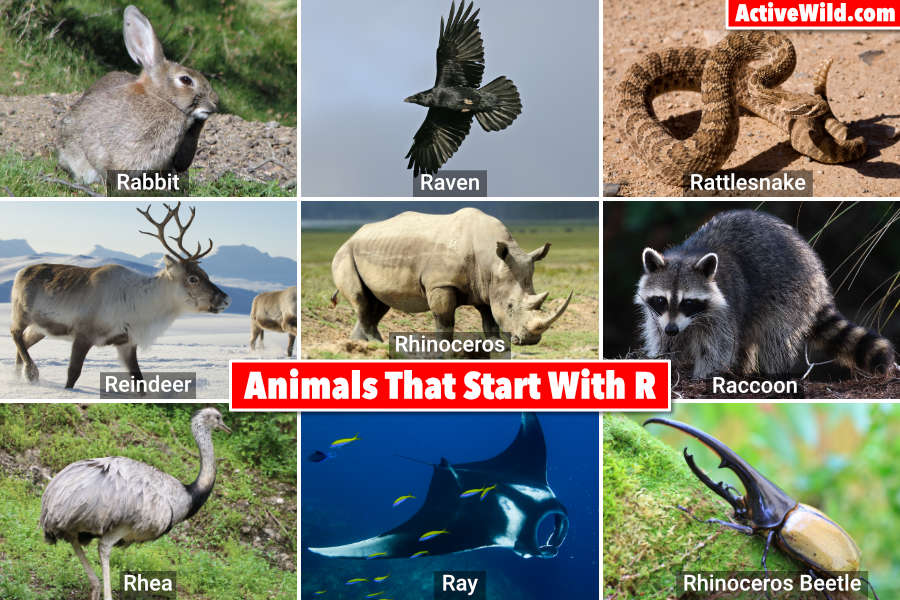Animals that start with R include mammals such as the raccoon, rats and reindeer; birds such as the raven and rheas; reptiles such as the radiated tortoise and rattlesnakes; and invertebrates such as the redback spider and rotifers.
On this page is a list containing these and many other interesting animals beginning with R, together with pictures and facts on each species.
Below each animal you’ll find links that you can follow for further information, pictures and videos.
Included in this list are individual species (e.g., the raccoon) and groups of species (e.g., rats) whose names begin with R. The scientific name and conservation status are provided for each of the individual species.
Animal Index
Scroll down to see pictures and facts on all of the animals, or use the index below to go directly to a particular animal.
You can find animals beginning with other letters by clicking on the squares below…
List Of Animals Beginning With R
Rabbit
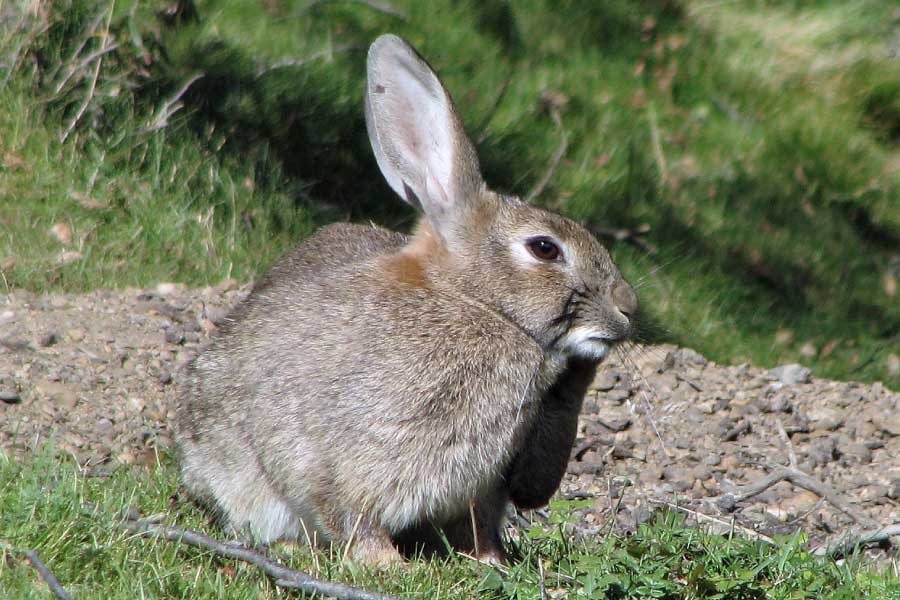
- Class: Mammalia
- Family: Leporidae
- Continent(s) Found: Originally Europe and Africa; introduced to Australia, North America, and South America
- Conservation Status: Varies by species
Rabbits are small mammals with round bodies, powerful hind legs, sharp teeth, and distinctive long ears.
Along with hares and jackrabbits, rabbits make up the animal family Leporidae. Leporidae is part of a larger group of mammals, the order Lagomorpha, which also contains pikas.
The main difference between rabbits and hares is that rabbits live underground in large burrows called warrens, whereas hares (and jackrabbits) dig a shallow hole in the ground, which is known as a form.
Discover More With Active Wild
Raccoon

- Scientific Name: Procyon lotor
- Class: Mammalia
- Family: Procyonidae
- Continent(s) Found: North and Central America
- Conservation Status: Least Concern
The raccoon is the largest member of the family Procyonidae, which includes other small to medium-sized mammals such as coatis and kinkajous. It has a thick gray coat and a distinctive black and white ‘masked’ face. Its front paws are well adapted for manipulating objects, and the raccoon is known for its intelligence.
Originally a forest animal, the raccoon has adapted well to the presence of humans and is now a familiar visitor to many suburban gardens in North America.
Discover More With Active Wild
Raccoon Dog (Common)
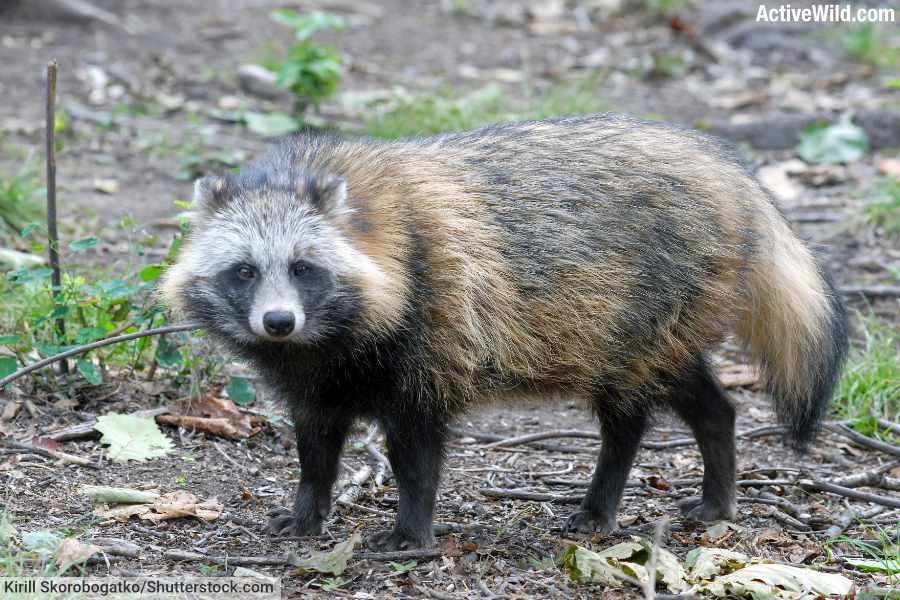
- Scientific Name: Nyctereutes procyonoides
- Class: Mammalia
- Family: Canidae
- Continent(s) Found: East Asia, Europe (introduced)
- Conservation Status: Least Concern
With its small, pointed head and prominent facial markings, the common raccoon dog resembles its namesake the raccoon, but is a member of the dog family, Canidae. It is closely related to the Japanese raccoon dog.
The raccoon dog is native to Asia, but has also been introduced to Europe, where it was first transported for its fur.
The raccoon dog has a long body and relatively short legs. It weighs between 3 and 10 kg / 6.6 and 22 lb.
The species is typically found in areas with dense vegetation. It is often found near water, and is a capable swimmer. It will even dive underwater in search of a meal if necessary.
The raccoon dog is omnivorous and opportunistic, and will eat anything it can catch, including aquatic animals, which it scoops up with its paws. Its diet changes seasonally.
The species is the only member of the dog family known to hibernate.
Discover More With Active Wild
Radiated Tortoise
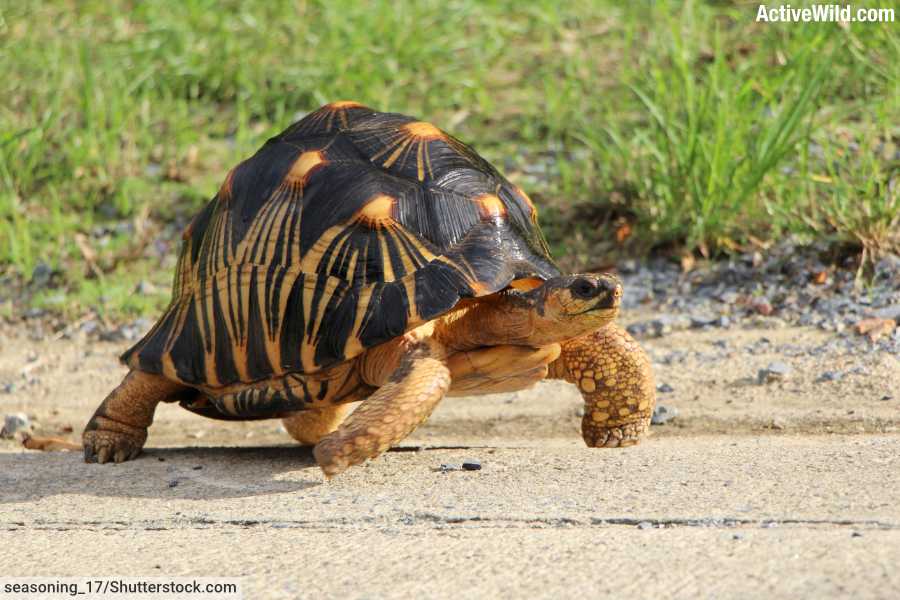
- Scientific Name: Astrochelys radiata
- Class: Reptilia
- Family: Testudinidae
- Continent(s) Found: Madagascar
- Conservation Status: Critically Endangered
The Radiated Tortoise is a critically endangered reptile native to the African island country, Madagascar.
Distinguished by its high-domed shell, which is beautifully marked with a star pattern of yellow lines radiating from the center of each dark plate, the radiated tortoise is among the world’s most visually striking tortoises.
The radiated tortoise lives in dry regions of Madagascar, feeding primarily on grasses, fruits, and succulents. Its survival is threatened by habitat loss and poaching for the exotic pet trade.
Discover More With Active Wild
Ram (Domestic Sheep)
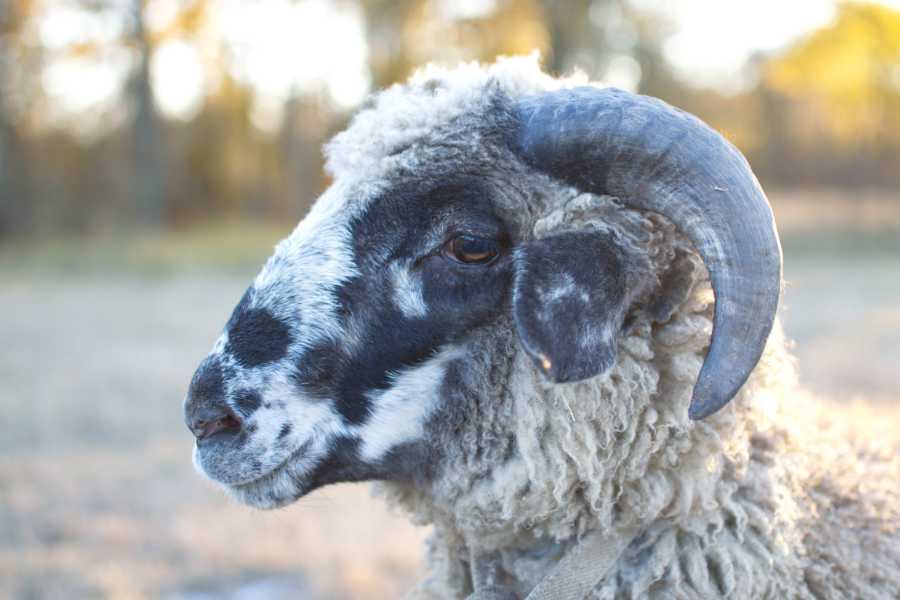
- Scientific Name: Ovis aries
- Class: Mammalia
- Family: Bovidae
- Continent(s) Found: Worldwide (domesticated)
- Conservation Status: n/a (domestic species)
A ram is a male sheep, recognized for its prominent, curved horns and thick, woolly coat.
Domesticated for thousands of years, rams are integral to human agriculture, primarily raised for wool, meat, and breeding purposes. They exhibit a sturdy, stocky body build and can vary in color and size depending on the breed.
Rams are known for their assertive and sometimes aggressive behavior, especially during mating season, when they might butt heads in displays of dominance and strength.
Discover More With Active Wild
Rat
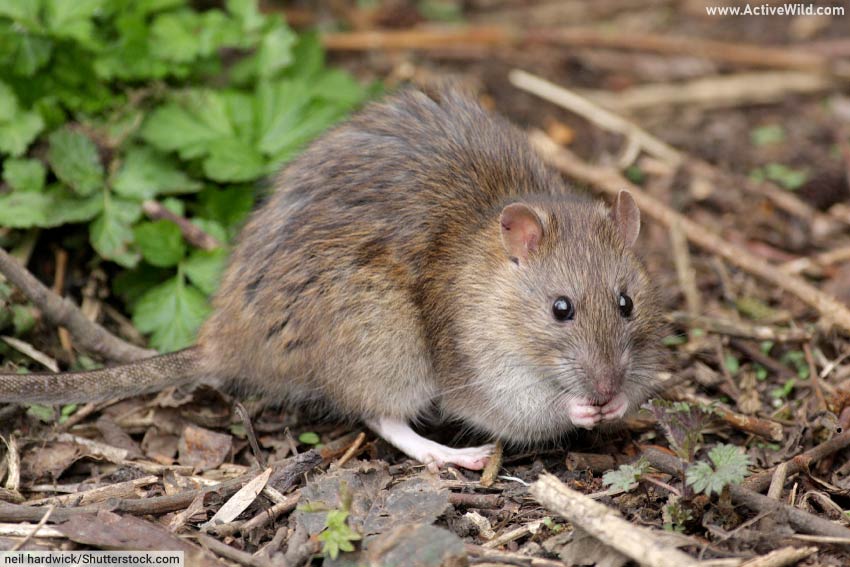
- Class: Mammalia
- Family: Muridae
- Continent(s) Found: Worldwide
- Conservation Status: Least Concern
Rats are rodents of genus Rattus. There are 63 living species of “true” rats (source, Catalogue of Life), and several other animals (such as bandicoot rats) that have the word “rat” in their name, but are not members of Rattus.
Rats are incredibly successful animals, and are found on every continent on Earth, with the exception of Antarctica.
Two species in particular, the black rat (Rattus rattus) and the brown rat (Rattus norvegicus), are extremely widespread due to their ability to live alongside humans.
Discover More With Active Wild
Rattlesnake
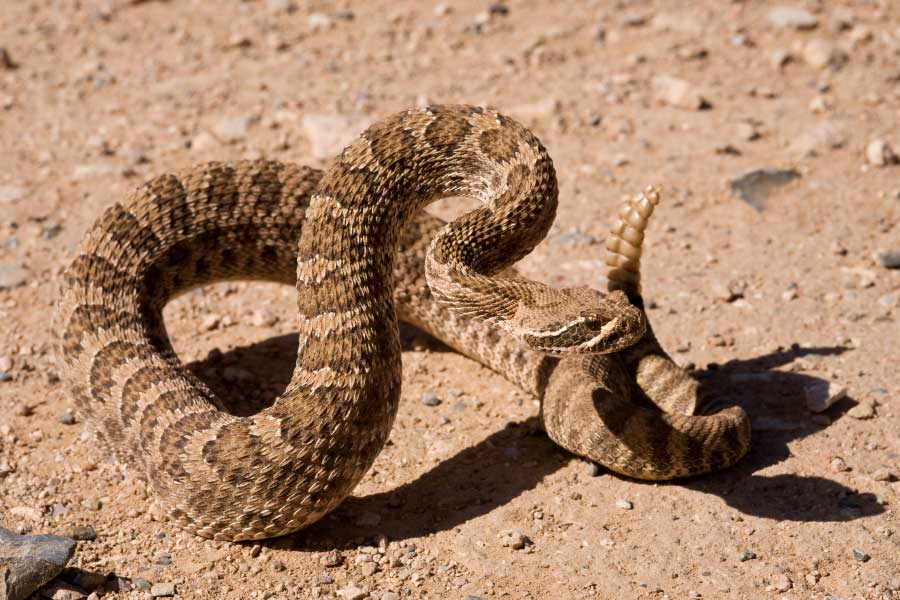
- Class: Reptilia
- Family: Viperidae
- Continent(s) Found: North America
- Conservation Status: Varies by species
Rattlesnakes are venomous snakes found in the Americas (the continents of North and South America). Rattlesnakes have a number of hardened segments at the end of their bodies which, when vibrated, make a rattling sound. This sends out a message to potential predators that the snake is venomous.
The reptile database recognizes 56 rattlesnake species: 53 belonging to genus Crotalus, and 3 of genus Sistrurus. (Source, Reptile Database)
Common species of rattlesnake include the Eastern Diamondback Rattlesnake (Crotalus adamanteus), Western Diamondback Rattlesnake: (Crotalus atrox), Timber Rattlesnake: (Crotalus horridus) and Mojave Rattlesnake: (Crotalus scutulatus).
Discover More With Active Wild
Raven (Common)
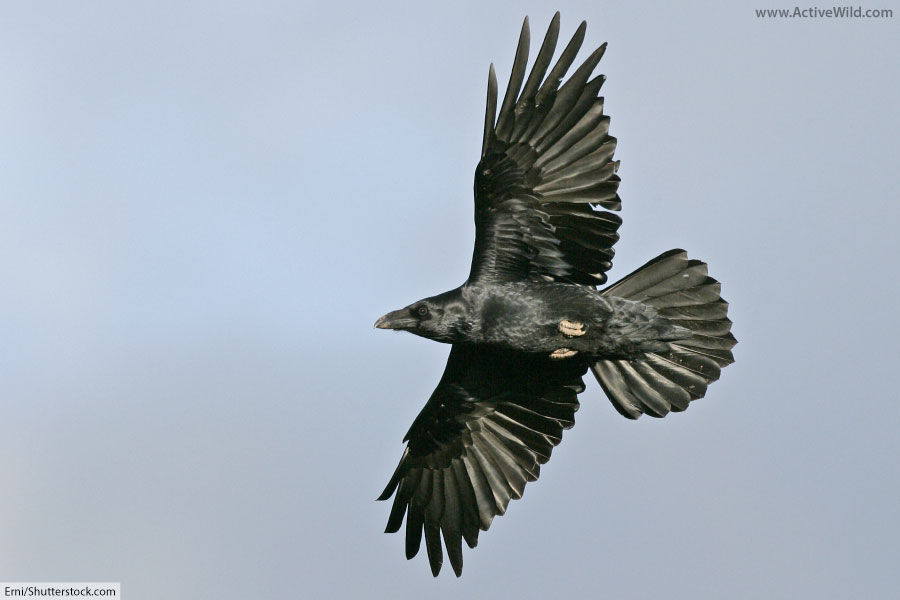
- Scientific Name: Corvus corax
- Class: Aves
- Family: Corvidae
- Continent(s) Found: North America, Europe, Asia, North Africa
- Conservation Status: Least Concern
Ravens are large, black birds found throughout the Northern Hemisphere. The common raven and thick-billed raven are the largest of the passerines (perching birds). Both are larger than many birds of prey.
The common raven is usually found away from human habitation, and lives in a variety of habitats, including forests, mountains, coastal areas and Arctic tundra.
The species is known for its high intelligence and has one of the largest brains of any bird.
Discover More With Active Wild
Ray
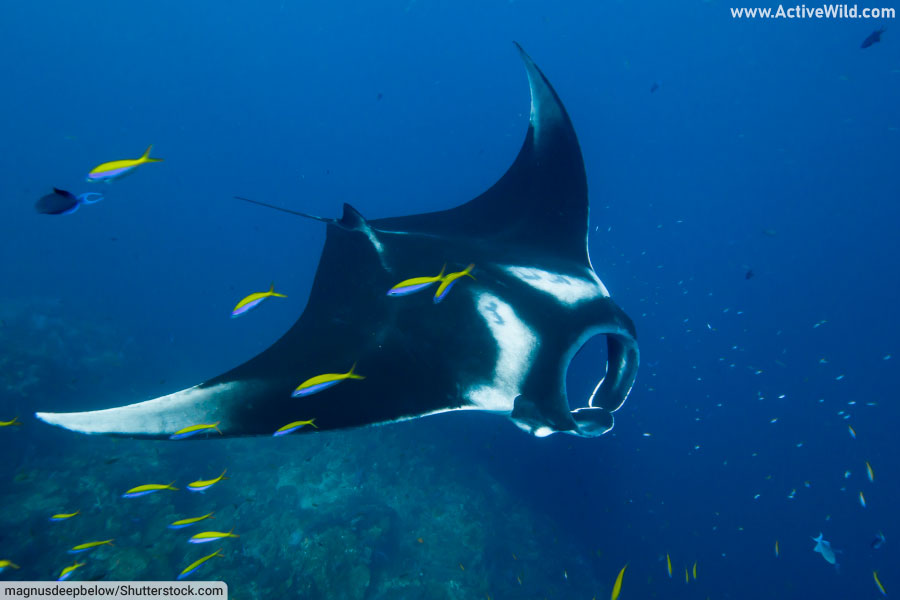
- Class: Chondrichthyes (cartilaginous fish)
- Superorder: Batoidea
- Continent(s) Found: Worldwide in tropical waters
- Conservation Status: Varies by Species
A ray is a fish belonging to the superorder Batoidea. There are over 600 species of rays.
Rays are closely related to sharks, and both rays and sharks are members of the class Chondrichthyes, a group of fish also known as the cartilaginous fishes.
The skeletons of cartilaginous fishes are made from a material called cartilage, which is more flexible than bone.
Rays are known for their distinctive flat bodies, large pectoral fins that are fused to their heads, and gill slits that are located on their undersides. Unlike the typical fish shape, rays have a wide, disk-like body, which makes them well-adapted for life on the ocean floor.
The tails of some rays are equipped with a stinger or spine, which can be venomous in some species. Most rays live in the ocean, but some species are found in brackish or fresh waters.
Examples of different types of rays include: stingrays, electric rays, manta rays and eagle rays. Each has unique adaptations. For example, manta rays are large and filter feed on plankton, while electric rays can produce an electric charge to stun prey or defend themselves.
Discover More With Active Wild
Red Eyed Tree Frog
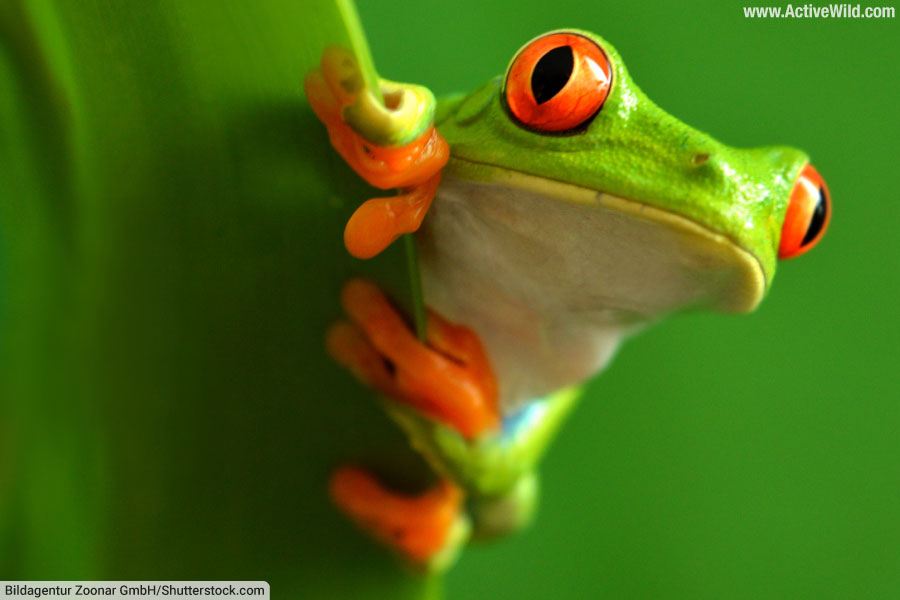
- Scientific Name: Agalychnis callidryas
- Class: Amphibia
- Family: Hylidae
- Continent(s) Found: Central America
- Conservation Status: Least Concern
The Red-eyed Tree Frog is an amphibian native to the rainforests of Central America.
Renowned for its striking red eyes, this frog boasts a brilliant green body, accented with blue and yellow stripes along its sides and bright orange feet.
These colors serve as a defense mechanism, startling predators and revealing its nocturnal nature.
Measuring up to 2.5 inches, the red-eyed treefrog lives in the rainforest canopy. It is able to grip with its large, suction-cup-like toes.
Primarily insectivorous, the species feeds on crickets, moths, and other small insects. Its iconic appearance makes it a symbol of tropical biodiversity and its image is often used to promote conservation efforts.
Discover More With Active Wild
Red Fox
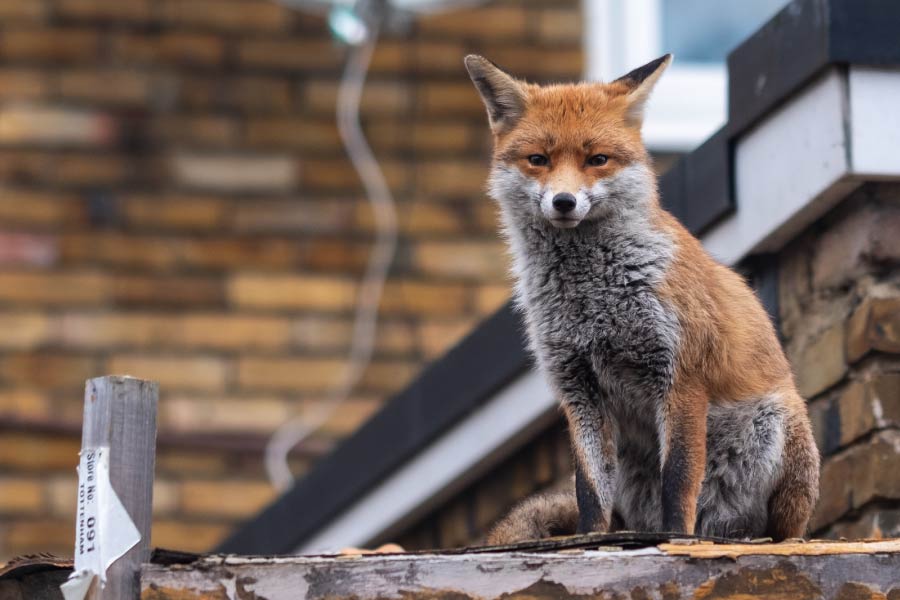
- Scientific Name: Vulpes vulpes
- Class: Mammalia
- Family: Canidae
- Continent(s) Found: North America, Europe, Asia, Australia (introduced)
- Conservation Status: Least Concern
The ‘true foxes’ are members of the genus Vulpes. The red fox, Vulpes vulpes, is the largest of the true foxes. (The first part of a species’ two-part scientific name is its genus.)
The red fox is found across a larger area of the world than not only any other member of the dog family Canidae, but also the entire order Carnivora, which also includes cats, bears and several other types of animal. The wide-ranging mammal is present throughout the entire Northern Hemisphere, including parts of the Arctic.
The red fox has also been introduced to Australia, where it is considered an invasive species. Its presence has been detrimental to many native Australian species.
Discover More With Active Wild
Red Kangaroo
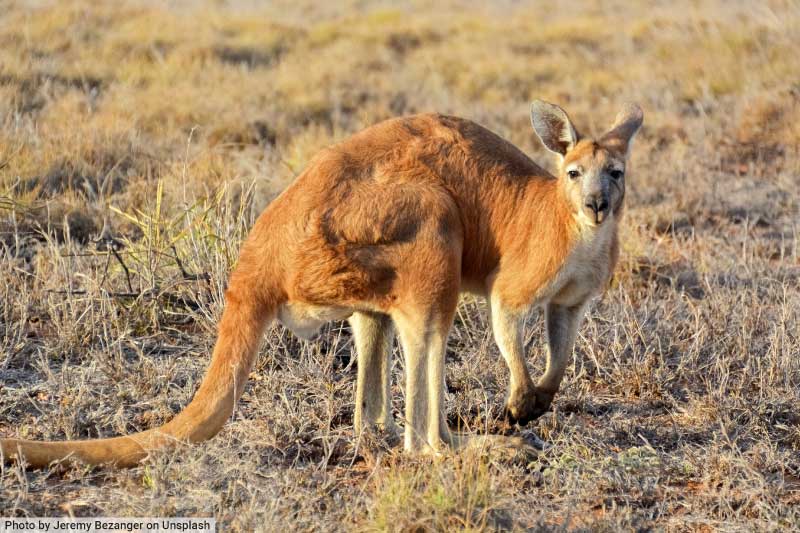
Scientific Name: Macropus rufus
- Class: Mammalia
- Family: Macropodidae
- Continent(s) Found: Australia
- Conservation Status: Least Concern
The red kangaroo is not only the largest kangaroo species, but also the world’s largest marsupial. The red kangaroo is endemic to (only found in) Australia.
A large adult male red kangaroo can grow to over 2 m (6.5 ft.) in height, although the average red kangaroo is somewhat shorter at 1.5 m (4.9 ft.). The species’ name comes from its red-brown coat.
Male red kangaroos establish dominance with ‘boxing matches’ in which the opponents face each other and lash out with their forelegs and powerful hind legs.
You can see pictures, video and facts about the red kangaroo on this page: Red Kangaroo Facts
Discover More With Active Wild
Red Panda
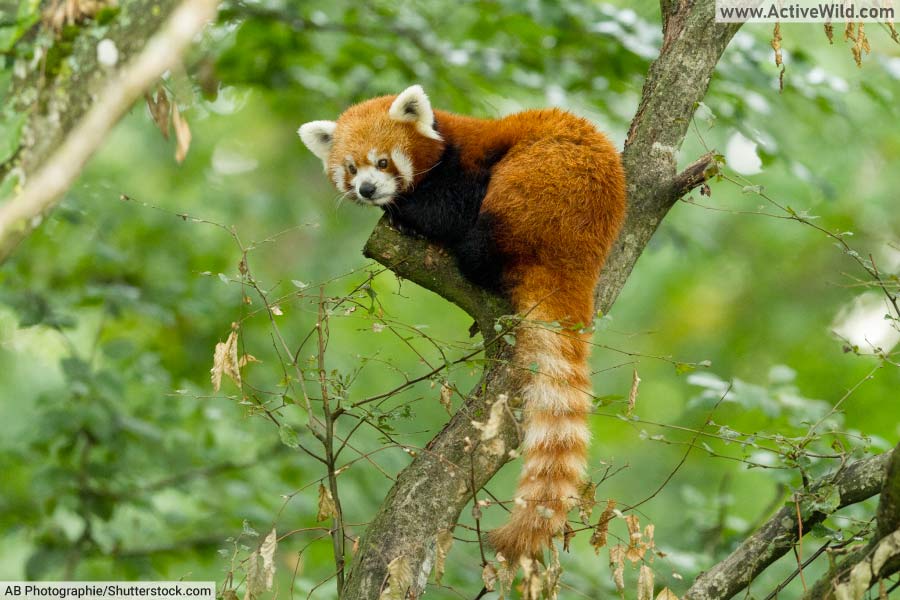
- Scientific Name: Ailurus fulgens
- Class: Mammalia
- Family: Ailuridae
- Continent(s) Found: Eastern Himalayas, Southwestern China
- Conservation Status: Endangered
The Red Panda is a small, arboreal mammal native to the Eastern Himalayas and Southwestern China. It is known for its reddish-brown fur, long shaggy tail, and raccoon-like face.
Despite its name, the red panda is not a bear and not closely related to its namesake, the giant panda.
The red panda is slightly larger than a domestic cat and spends most of its life in trees. Its diet mainly consists of bamboo, but it also eats eggs, birds, and insects. It is active mainly at dawn and dusk.
Facing threats from habitat loss and fragmentation, the solitary and elusive red panda is currently classified as Endangered by the IUCN.
Discover More With Active Wild
Red Squirrel
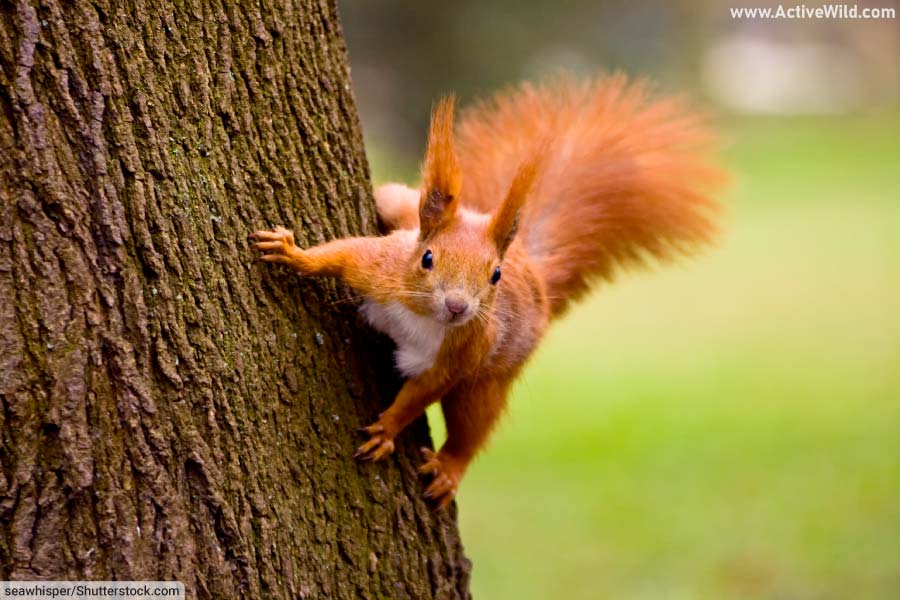
- Scientific Name: Sciurus vulgaris
- Class: Mammalia
- Family: Sciuridae
- Continent(s) Found: Europe, parts of Asia
- Conservation Status: Least Concern
The Red Squirrel is a small and agile tree-dwelling rodent, native to Eurasia. Recognizable by its vibrant russet fur, tufted ears, and bushy tail, it plays a vital role in forest ecosystems.
Measuring around 20 cm in body length, the red squirrel primarily feeds on seeds, nuts, fruits, and occasionally birds’ eggs.
Like other tree squirrels, the red squirrel is adept at climbing and leaping between trees. Its population is threatened by habitat loss and competition from the introduced grey squirrel, making conservation efforts crucial.
Discover More With Active Wild
Red Wolf
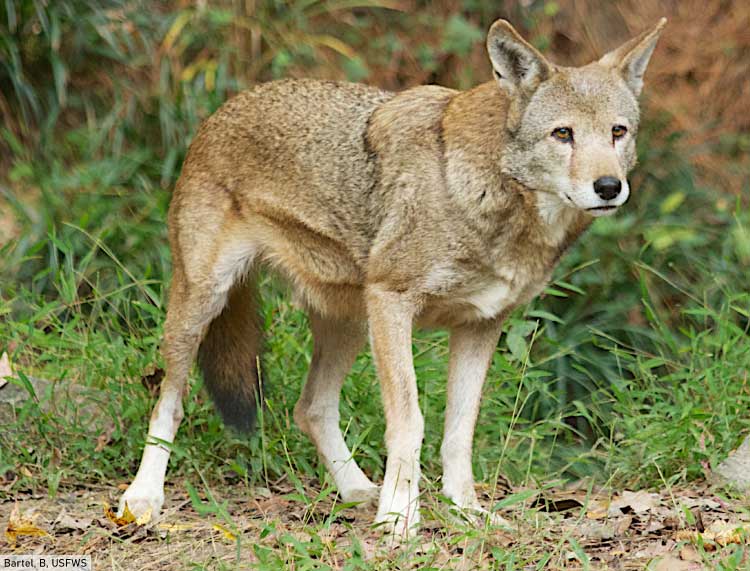
Scientific Name: Canis rufus
- Class: Mammalia
- Family: Canidae
- Continent(s) Found: Southeastern United States
- Conservation Status: Critically Endangered
The Red Wolf is a distinct species of wolf native to the southeastern United States. Smaller and more slender than its cousin, the Gray Wolf, the Red Wolf has a reddish-tan coat, pointed ears, and long legs.
Once roaming vast expanses, the red wolf’s population drastically declined due to habitat loss and persecution. By the late 20th century, it was nearly extinct in the wild.
Conservation efforts, including captive breeding and reintroduction, have been critical in preventing its complete disappearance.
Today, the Red Wolf remains one of the world’s most endangered canids, symbolizing the challenges and hopes of wildlife conservation.
Discover More With Active Wild
Redback Spider
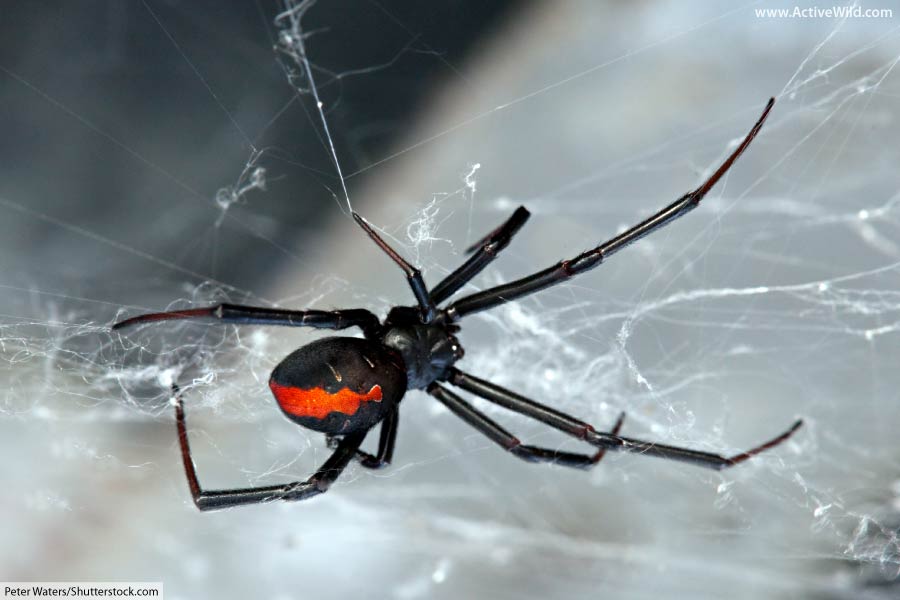
Scientific Name: Latrodectus hasselti
- Class: Arachnida
- Family: Theridiidae
- Continent(s) Found: Australia, Southeast Asia, New Zealand, Middle East, Japan
- Conservation Status: Not Evaluated
The Redback Spider is a venomous species native to Australia, notorious for its potentially harmful bite. It’s easily identifiable by its glossy black body and the prominent red or orange stripe on the upper side of its abdomen. Females, significantly larger than males, can reach up to 1 cm in body length.
The Redback builds messy, tangled webs in sheltered, dry locations. Its diet consists mainly of insects, which are caught in the web, and occasionally small vertebrates.
While the redback spider’s venom is potent, effective antivenom has made fatalities extremely rare.
Redbacks are a symbol of Australia’s rich, diverse, and sometimes dangerous wildlife.
Discover More With Active Wild
Reindeer
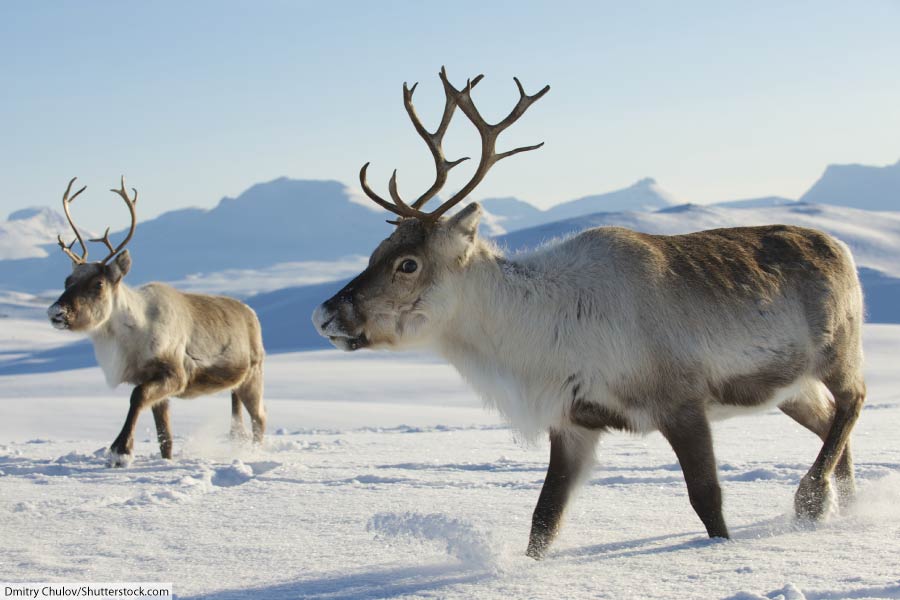
Scientific Name: Rangifer tarandus
- Class: Mammalia
- Family: Cervidae
- Continent(s) Found: Circumpolar in the Arctic and Subarctic regions
- Conservation Status: Vulnerable
The reindeer is a member of the deer family, Cervidae. It is found in Arctic and subarctic regions in Europe, Asia and North America. In North America, it is known as caribou.
Both male and female reindeer grow antlers (the female is the only female deer to grow antlers). The male reindeer has the second-largest antlers of any deer (only those of the moose are larger).
Reindeer are able to see ultraviolet light. This helps them to find food and detect signs of predators in the snowy Arctic environment.
Discover More With Active Wild
Reticulated Python
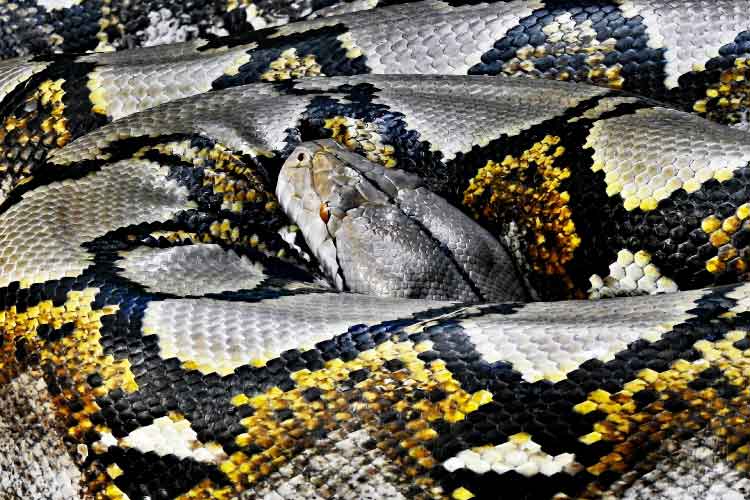
Scientific Name: Python reticulatus
- Class: Reptilia
- Family: Pythonidae
- Continent(s) Found: Southeast Asia
- Conservation Status: Not Evaluated
The reticulated python is the longest snake in the world. Large specimens can reach lengths of up to 6.5 m (21.3 ft.). The reticulated python is found in South and Southeast Asia. It lives near water in rainforests and woodlands.
The reticulated python has a bright, net-like pattern running along the length of its back. It is this that gives the species its name (‘reticulated’ means ‘net-like’).
Like all pythons, the reticulated python is non-venomous. It dispatches its prey by constriction, wrapping itself around the victim and preventing it from breathing.
You can find out more about the reticulated python on this page: Reticulated Python Facts
Discover More With Active Wild
Rhea (Greater)
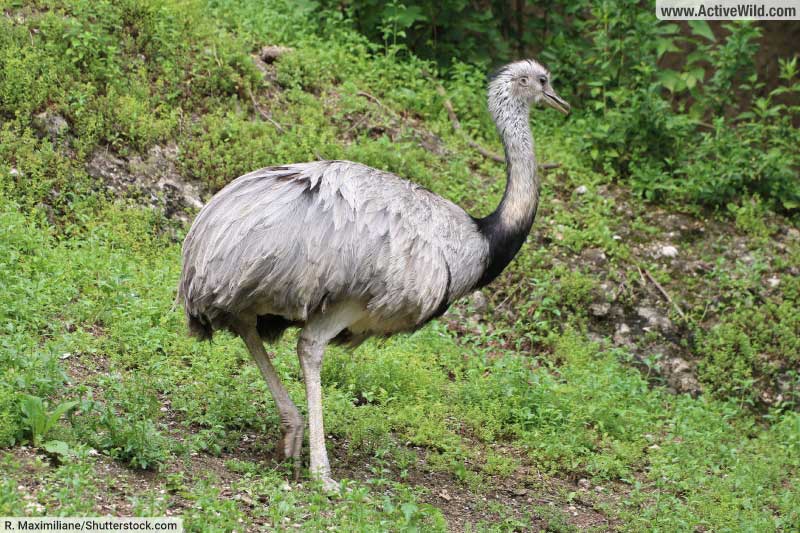
- Scientific Name: Rhea americana
- Class: Aves
- Family: Rheidae
- Continent(s) Found: South America
- Conservation Status: Near Threatened
The Greater Rhea is a large, flightless bird native to South America, primarily found in Argentina, Brazil, Bolivia, Paraguay, and Uruguay.
The largest of the three species of rhea, the greater rhea stands about 1.5 meters tall. It is the largest bird of the Americas.
Despite its size and inability to fly, the greater rhea is remarkably swift on the ground. Rheas are omnivorous, feeding on a variety of plants and small animals.
Unlike many other birds, male rheas are solely responsible for incubating eggs and raising the young.
This impressive bird, while not endangered, faces threats from habitat loss and hunting.
Discover More With Active Wild
Rhesus Macaque
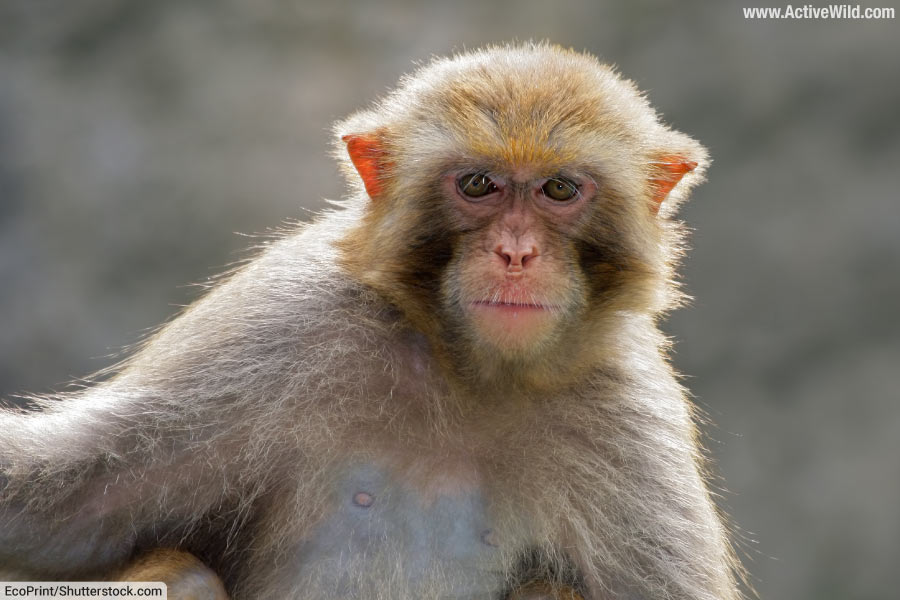
- Scientific Name: Macaca mulatta
- Class: Mammalia
- Family: Cercopithecidae
- Continent(s) Found: South, Central, and Southeast Asia
- Conservation Status: Least Concern
The rhesus macaque is a species of monkey found in south, southeast and East Asia. Originally an inhabitant of forests, it has adapted to living alongside humans. Today it is a common sight in many urban areas, where troops of rhesus macaques beg or scavenge for food.
Discover More With Active Wild
Rhinoceros
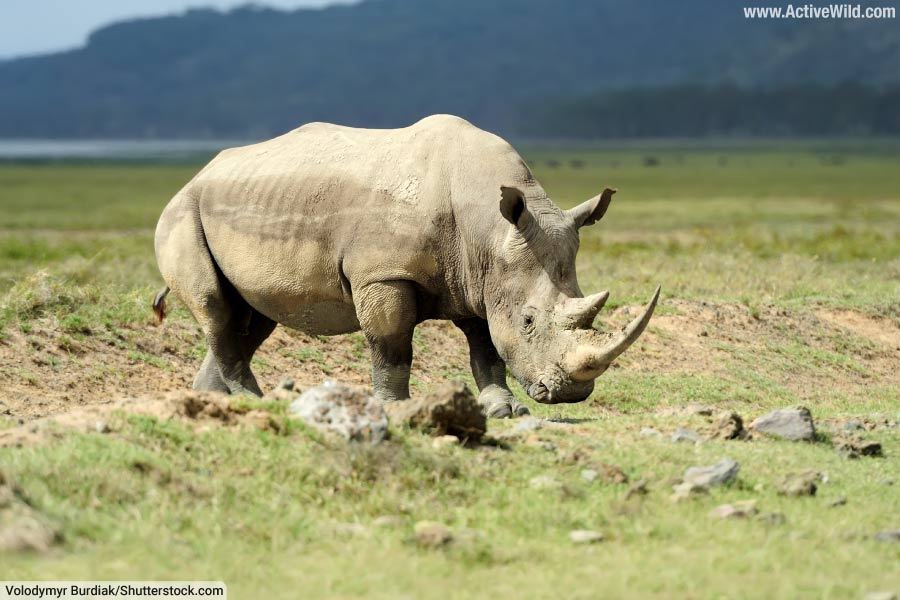
- Class: Mammalia
- Family: Rhinocerotidae
- Continent(s) Found: Africa
- Conservation Status: Varies by species
The name ‘rhinoceros’ means ‘nose-horned’, and refers to the distinctive horns on a rhino’s nose. There are five species of rhino. Two, the white rhino and the black rhino, are found in Africa. The remaining species, the Indian rhino, Javan rhino and Sumatran rhino, are found in Asia.
The Indian and Javan rhinos have a single horn. The other species have two horns.
All five species of rhino are threatened, with the black, Javan and Sumatran rhinos all critically endangered, due mainly to poaching.
Rhinos are targeted by poachers for their horns, which are used in traditional eastern medicine.
Discover More With Active Wild
- You can find out more about rhinos on this page: Rhino Facts
- For information, pictures and facts about the white rhino, visit this page: White Rhino Facts
- For information, pictures and facts about the black rhino, visit this page: Black Rhino Facts
Rhinoceros Beetle
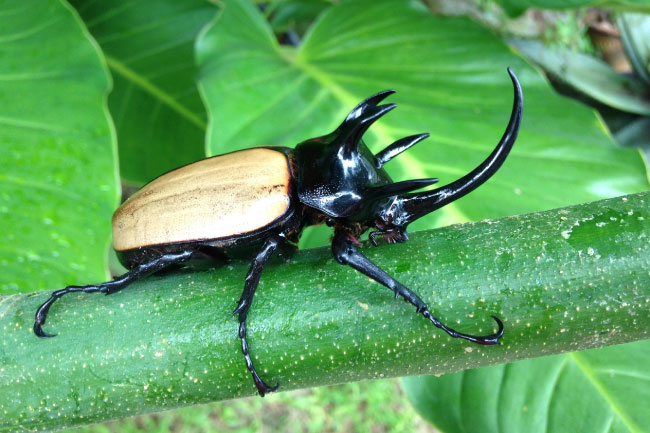
- Scientific Name: Subfamily Dynastinae (many species)
- Class: Insecta
- Family: Scarabaeidae
- Continent(s) Found: Worldwide, particularly in tropical regions
- Conservation Status: Varies by species
Rhinoceros beetles are large beetles that get their name from the large horns on the heads of the males. Some of the world’s largest beetles are rhinoceros beetles, with some species reaching lengths of over 18 cm (7 in).
The rhinoceros beetles’ horns are used for fighting. they are used to push opponents rather than to injure by piercing.
Rhinoceros beetles are harmless to humans, and are unable either to sting or to bite.
Discover More With Active Wild
- You can find out more about the beetles on this page: Beetle Facts
Ring Tailed Lemur
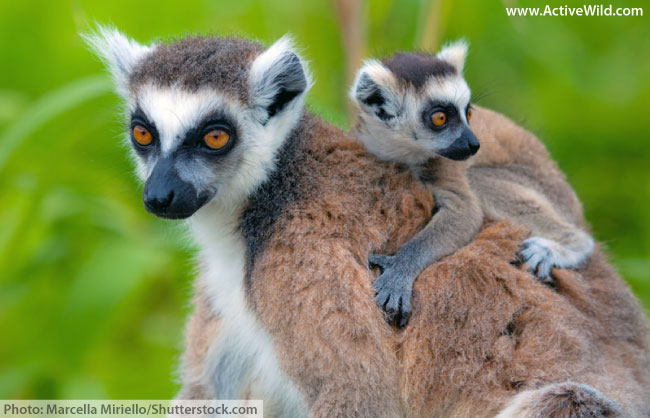
- Scientific Name: Lemur catta
- Class: Mammalia
- Family: Lemuridae
- Continent(s) Found: Madagascar
- Conservation Status: Endangered
The ring-tailed lemur is one of the best-known species of lemurs – a group of primates found only on the African island of Madagascar.
The ring-tailed lemur is found in the forests and bushlands to the south of the island. It lives in groups of up to 30 individuals.
Despite being a common sight in zoos, this black and white-tailed primate is an endangered species. There may be as few as 2,000 ring-tailed lemurs left in the wild.
The species’ endangered status is caused both by its being hunted by local people for food, and by habitat loss.
Discover More With Active Wild
Rock Hyrax
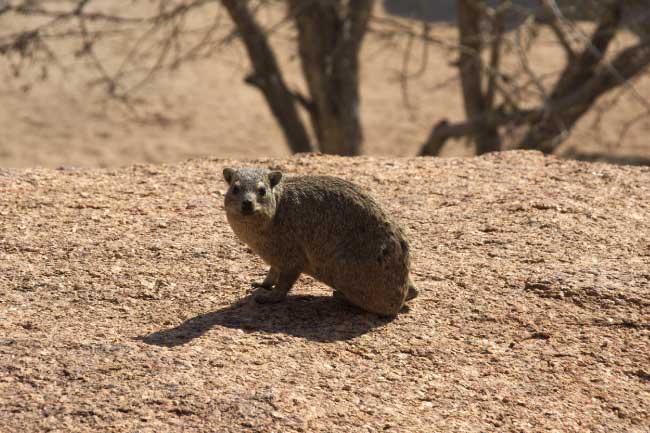
- Scientific Name: Procavia capensis
- Class: Mammalia
- Family: Procaviidae
- Continent(s) Found: Africa, Middle East
- Conservation Status: Least Concern
The rock hyrax is a rodent-like mammal found throughout sub-Saharan Africa and northeast Africa. It is one of just four hyrax species (some authorities recognize five species). Surprisingly, the closest relatives of these small animal are elephants and manatees.
The rock hyrax is present in a wide range of habitats, from deserts to rainforests. It lives in gaps and crevices in rocks.
Groups of rock hyraxes forage for food near their homes. As they forage, one or more members of the group act as a lookout, ready to raise the alarm should a predator appear.
Discover More With Active Wild
Rockfish
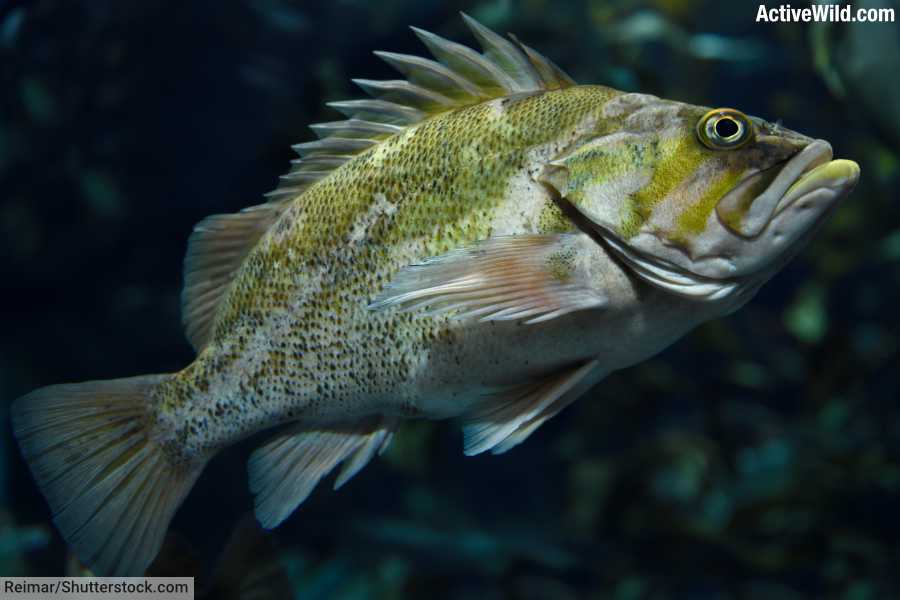
- Scientific Name: Sebastes (genus, various species)
- Class: Actinopterygii
- Family: Sebastidae
- Continent(s) Found: Mostly in the Northern Pacific Ocean
- Conservation Status: Varies by species
Rockfish, encompassing over 100 species in the genus Sebastes, are marine fish known for their longevity and vibrant colors, ranging from reds and oranges to blues and greens.
Commonly found in the North Pacific Ocean, they inhabit rocky bottom environments, kelp forests, and deep-sea waters.
Rockfish vary greatly in size, with some species growing up to 100 centimeters. They are characterized by their spiny fins and stout bodies. Many species are slow-growing and late to mature, making them vulnerable to overfishing.
Their diverse forms and adaptability contribute significantly to the ecological balance of marine ecosystems and are a popular target for recreational and commercial fishing.
Discover More With Active Wild
Rockhopper Penguin
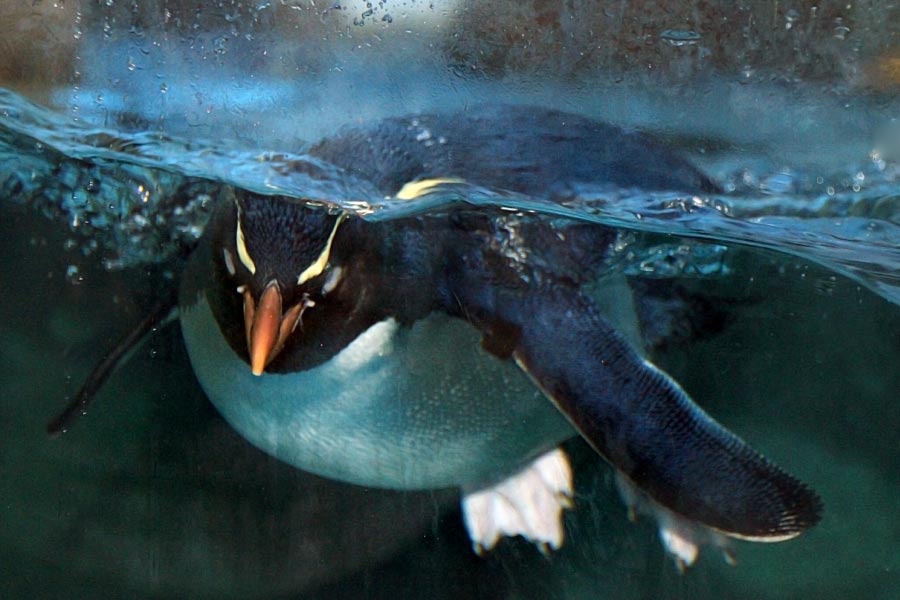
- Scientific Name: Eudyptes chrysocome
- Class: Aves
- Family: Spheniscidae
- Continent(s) Found: Subantarctic islands
- Conservation Status: Vulnerable
The rockhopper penguin, known for its distinctive crest of spiky yellow and black feathers, is a small, species of penguin found in subantarctic regions.
With its red eyes, orange beak, and bold black-and-white plumage, the species is one of the more distinctive penguins. It’s named for its unique hopping behavior over the rocky, rugged terrain of its island habitats.
Despite being only about 55 cm tall, the rockhopper is a robust and agile swimmer, feeding mainly on krill, squid, and small fish. The species is known for its loud, raucous calls and energetic displays.
Unfortunately, the rockhopper penguin population is declining, primarily due to overfishing, classifying it as a vulnerable species.
Discover More With Active Wild
Roseate Spoonbill
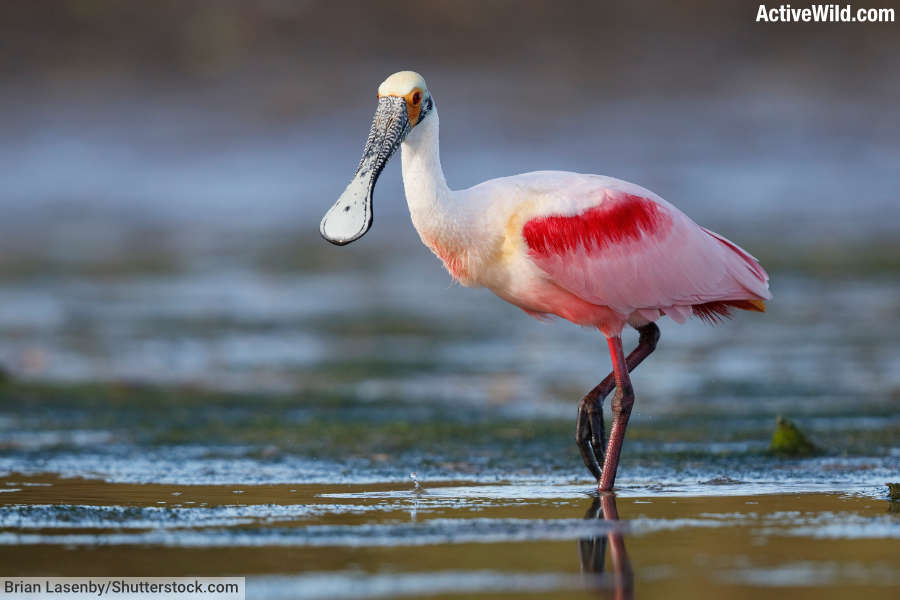
- Scientific Name: Platalea ajaja
- Class: Aves
- Family: Threskiornithidae
- Continent(s) Found: South America, coastal regions of Central America, southeastern United States
- Conservation Status: Least Concern
The roseate spoonbill is a striking wading bird known for its vibrant pink plumage and distinctive spoon-shaped bill.
Native to wetlands in the Americas, from the southeastern United States to Argentina, the roseate spoonbill is typically found in mangroves, marshes, and tidal flats.
The bird’s unique, spoon-shaped bill is specialized for sifting through mud to catch small fish, crustaceans, and insects.
Adult spoonbills have a brilliant pink coloration, acquired from their diet rich in carotenoids.
Roseate spoonbills are social birds, often seen in flocks. While not currently endangered, habitat loss and water pollution pose significant threats to their populations. Their presence is a key indicator of wetland health.
Discover More With Active Wild
Rotifer
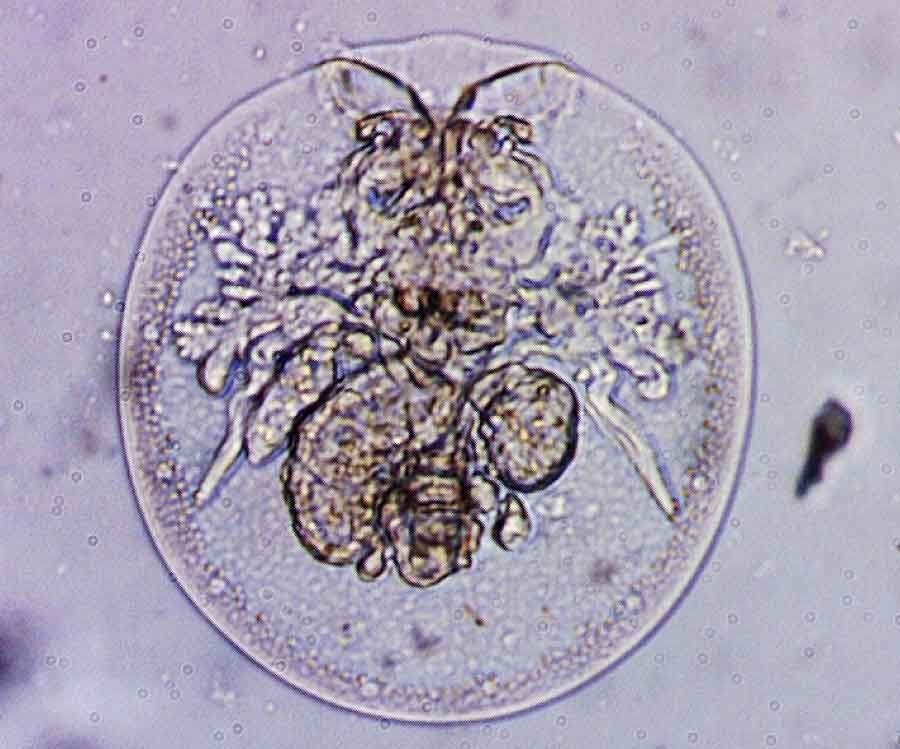
- Scientific Name: Phylum Rotifera (various species)
- Class: Eurotatoria (most common class)
- Family: Various families
- Continent(s) Found: Worldwide
- Conservation Status: Not Evaluated (due to a wide range of species)
Rotifers are tiny aquatic animals that make up the phylum Rotifera. (A phylum is one of the 34 large groups into which the entire animal kingdom is divided).
Most rotifers are between 0.2 and 0.5 mm in length. Despite their small size, rotifers have a brain, nervous system and digestive system.
Discover More With Active Wild
You can find out more about the xxx on this page: xxx Facts
Rottweiler

- Scientific Name: Canis lupus familiaris
- Class: Mammalia
- Family: Canidae
- Continent(s) Found: Worldwide (domesticated)
- Conservation Status: Not Applicable (domesticated breed)
The Rottweiler is a robust and powerful dog breed, renowned for its strength, loyalty, and protective instincts.
Originating from Germany, these dogs were historically used for herding livestock and pulling carts.
Characterized by a stocky, muscular build, they possess a black coat with distinctive tan markings on their face, chest, and paws. Rottweilers typically display a calm and confident demeanor, paired with a deep commitment to their families.
With proper training and socialization, rottweilers excel in obedience, making them well-suited for various working roles.
Discover More With Active Wild
Royal Penguin
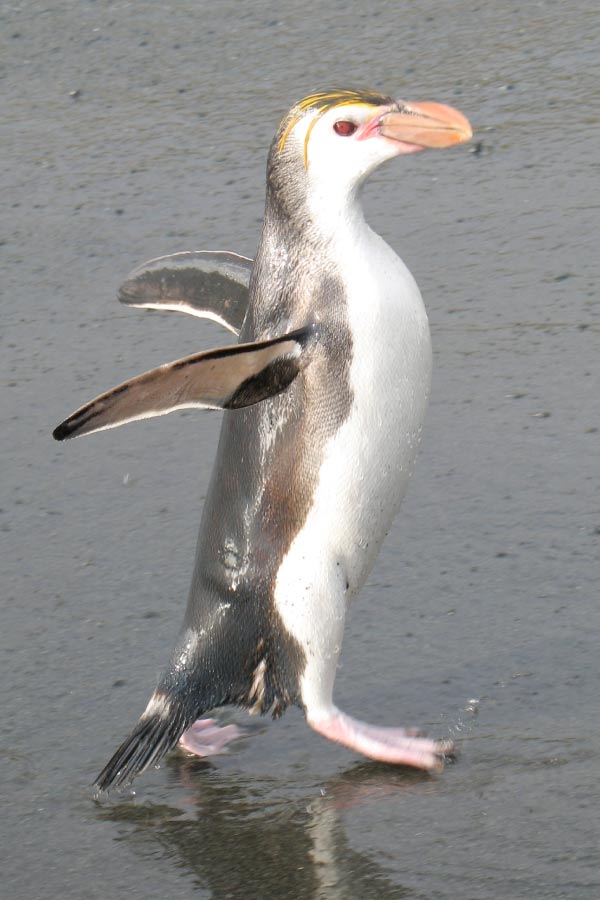
- Scientific Name: Eudyptes schlegeli
- Class: Aves
- Family: Spheniscidae
- Continent(s) Found: Subantarctic region, particularly Macquarie Island
- Conservation Status: Near Threatened
The Royal Penguin is a unique and visually striking species of penguin, primarily found on Macquarie Island in the subantarctic.
Distinguished by its white face and chin, contrasting sharply with the rest of its black head and back, this medium-sized penguin reaches about 70 cm in height. It has a distinctive yellow crest, similar to other Eudyptes penguins.
Royal Penguins breed exclusively on Macquarie Island, gathering in large colonies. They feed mainly on krill, fish, and small squid. The species is known for its loud, trumpeting calls and is an adept swimmer, spending a significant portion of its life at sea.
Discover More With Active Wild
Rusty Patched Bumble Bee
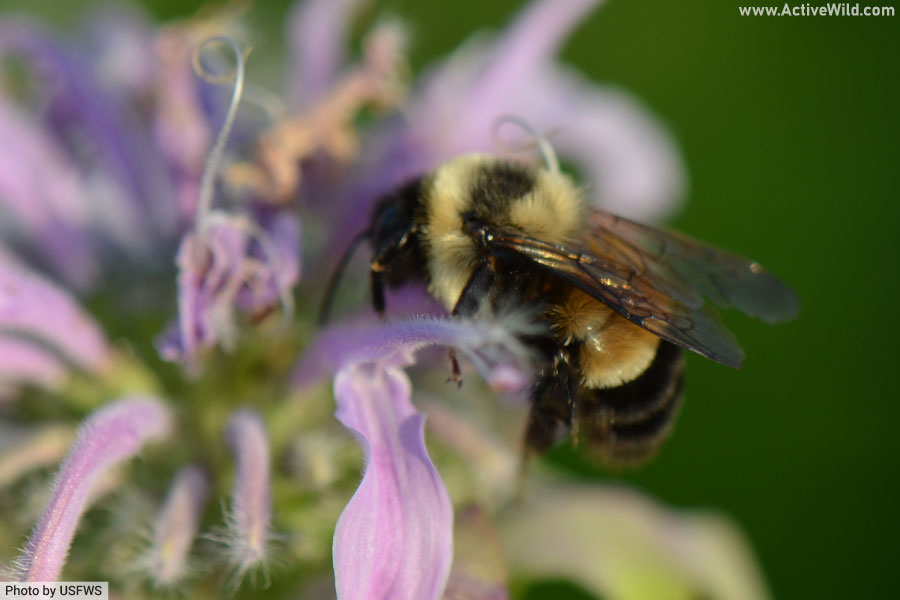
- Scientific Name: Bombus affinis
- Class: Insecta
- Family: Apidae
- Continent(s) Found: North America (primarily United States and parts of Canada)
- Conservation Status: Critically Endangered
As recently as 40 years ago, the rusty-patched bumble bee was one of the most common species of bumble bee in parts of North America. Since then, the population has crashed to a fraction of its original size and today the species is critically endangered.
The population decline is due to diseases being spread from commercially-bred bees, and habitat loss caused by changes in farming methods.
Rusty-patched bumble bee workers can be identified by the pale orange-yellow (rusty) patch on their backs.
Animals That Start With R: Conclusion
We hope that you’ve discovered some interesting animals with names beginning with R on this page.
You can discover more animals in our A to Z animals section by clicking on the letters below…

